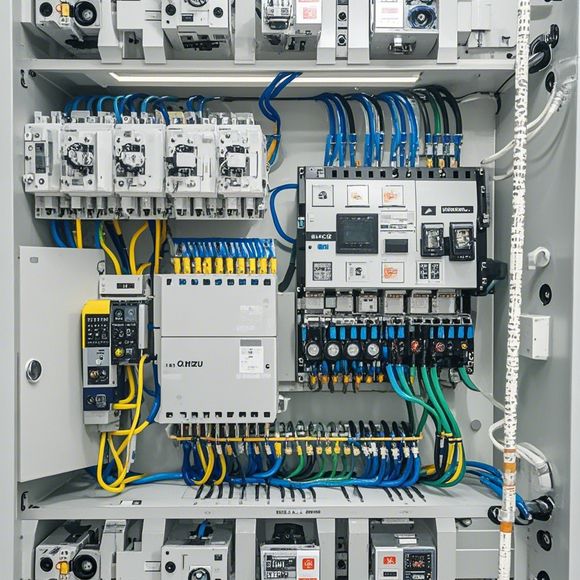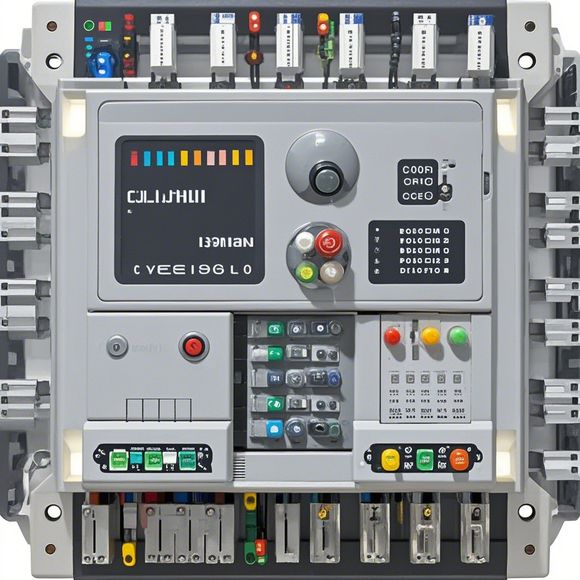Master Control System for PLCs
In today's world, where technology has taken a massive leap forward and the manufacturing industry is witnessing a significant transformation, there is no doubt that the role of PLC (Programmable Logic Controller) controllers cannot be underestimated. These are digital devices designed to control various processes, systems, and machines in industrial applications, making them crucial tools in modern production environments. In this context, understanding the functioning of PLCs and how they can enhance efficiency, productivity, and overall performance in manufacturing operations is essential.

The primary objective of PLCs is to automate and control the operation of industrial machinery and systems. They are programmed with algorithms that enable them to perform specific tasks, such as monitoring sensor data, adjusting machine settings, and managing process flow. By automating these functions, PLCs significantly reduce the need for human intervention, which leads to increased accuracy, reliability, and consistency in production outcomes. This automation not only improves operational efficiency but also reduces downtime and energy consumption, resulting in cost savings and environmental benefits.
Another critical advantage of PLCs is their ability to handle complex and dynamic processes. Unlike traditional mechanical or electrical controllers, PLCs can adapt to changes in conditions, such as temperature, pressure, and other variables, without compromising their control capabilities. This flexibility allows PLCs to operate in a wide range of industrial scenarios, including harsh environments, high-speed machinery, and complex assembly lines. As a result, they have become a preferred choice for industries that require precise control and reliable performance, such as aerospace, automotive, and pharmaceuticals.
In addition to their functionality, PLCs are also equipped with advanced communication protocols that enable them to interact seamlessly with other systems and devices in the production environment. For example, they can connect to computer networks to share data and control signals with other ERP (Enterprise Resource Planning) systems, MES (Manufacturing Execution System) software, and other critical components of an industrial system. This integration enables real-time monitoring and analysis of production performance, allowing for quick adjustments and improvements in order to meet changing customer needs and optimize resource usage.

Moreover, PLCs offer a range of programming options that allow users to create custom programs tailored to their specific needs. They can be programmed using different languages, such as ladder logic, structured text, and function blocks, depending on the complexity of the task being controlled. This flexibility ensures that PLCs can handle a wide range of applications and can be easily adapted to new technologies and processes as they emerge in the market.
One of the main challenges faced by PLC manufacturers is ensuring that their products meet the evolving demands of industrial automation. To address this challenge, many companies are investing in research and development to develop more advanced and efficient PLCs. These efforts include incorporating new sensor technologies, improving communication protocols, and developing more powerful computing capabilities that can handle larger amounts of data and complex control tasks. Additionally, companies are also focusing on enhancing the user interface of PLCs to make them more intuitive and user-friendly, making it easier for operators to program and monitor their systems.
Another area of focus for PLC manufacturers is sustainability and environmental friendliness. With increasing concerns about climate change and sustainable practices, companies are exploring ways to design PLCs that consume less power and have lower emissions. Some innovative approaches include using renewable energy sources for powering PLCs, implementing energy-efficient hardware designs, and optimizing software algorithms to minimize processing power. By adopting sustainable practices, manufacturers can contribute to reducing their own environmental impact while still meeting the demands of their customers.

In conclusion, the role of PLC controllers in modern manufacturing operations cannot be overstated. They provide essential support for automation and control, leading to improved efficiency, productivity, and quality of production. With advancements in technology and evolving requirements for industrial automation, PLC controllers continue to evolve and adapt to meet the needs of the manufacturing industry. As a result, businesses that invest in the latest PLC technologies will reap the benefits of increased productivity, reduced costs, and optimized resource use.
Content expansion reading:
Articles related to the knowledge points of this article:
Mastering the Art of Plc Controllers: A Comprehensive Guide to Understand and Implement
PLC Programming for Automation Control in the Manufacturing Industry
PLC (Programmable Logic Controller) Control System Basics
Plumbers Rule! The Role of PLC Controllers in the World of Waterworks
Connecting a PLC Controller to Your Computer
PLC Controllers: A Comprehensive Guide to Understanding Their Prices